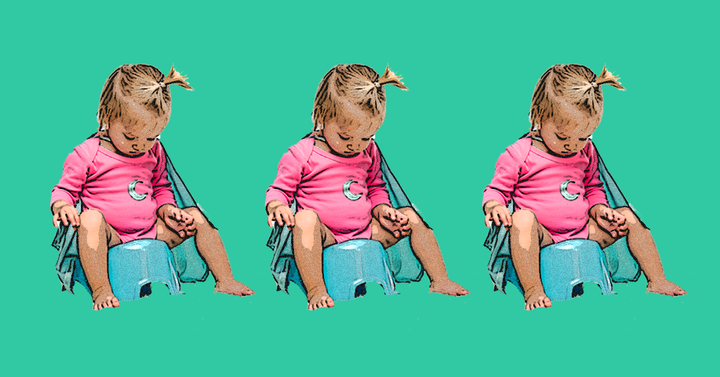Potty training: another part of toddler life which can, quite honestly, drive you mad. Whether it’s carrying around a portable potty on a shopping trip, those “accidents” while you’re out and about, or the hours spent sitting on the grown-up loo encouraging your little one on theirs, it’s certainly going to be a ride.
Amanda Jenner is a potty training expert in the UK and travels up and down the country to offer advice and support to parents in need.
Not only that, Jenner is also a potty trainer to the stars, having trained many kids of high-profile celebrities (although she’s only allowed to name Charlotte Tilbury). Here are seven top tips Jenner shared with HuffPost UK.

#1 Start When Your Child Is Ready, Not You
The biggest mistake Jenner encounters is when parents start potty training because they want their kids out of nappies, rather than the child showing signs of their own readiness. Those signs could include them stopping in their tracks when they are soiling their nappy, them asking for it to be removed once they’ve done a poo, and using words like “wee and poo”.
#2 Don’t Stop When The Going Gets Tough.
Another mistake, says Jenner, is when parents start potty training, try for two days, then stop because it’s too much hassle. “This gives really mixed messaging,” she says. “You have to persevere and think: ‘let’s do this’.”
If you do need to stop, make sure the break is productive. Some parents realise they’ve started too early or their child is having non-stop accidents all day.
At this point, Jenner says it’s okay to pause, and start again a month or so later. During this break, read potty training books with your child, see what apps are available, or find some potty training flash cards. “Educating them in that break period is important for when you reinstate the training,” she says.
#3 You Needn’t Worry About Age.
The average age when kids start potty training is rising dramatically in the UK, from around 18 months in the 1950s to three-and-a-half to four years now. There’s no recommended starting age, Jenner says, because every child is different. “You know your child, so forget about that peer pressure from other people or family friends – if your child isn’t interested, don’t force it.”
#4 Go Cold Turkey Straight Away.
“That’s just the way you have to do it,” says Jenner, who recommends going from nappies one day, to “big girl and boy pants” the next. As soon as they wake up, put the pants on them in the morning, switching to nappies only at night and only to begin with.
#5 Rewards And Praise Are Essential.
Look at what ticks with your child, says Jenner. Parents aren’t potty training themselves, kids are – so reward them when they manage to go to the loo on the potty. This could be a sticker chart or prize. Jenner has developed the idea of a magic reward box, where kids collect stars for each time they use the potty, then count the stars at the end of the day/week for a prize.
#6 Remain Calm In The Case Of Accidents.
Don’t shout or get angry, but you can be direct. “It doesn’t go there, you wee in the potty,” is a suggestion from Jenner. “Really sit and talk to them and explain to them in simple terms what happened,” she says. “Go to the toilet/potty, take the pants and show them where it goes.”
#7 Keep Asking If They Need A Wee.
For the first couple of days, ask your child every 30-60 minutes if they need a wee or poo. After that – on day three – encourage them to ask independently to go to the toilet. For years they’ve had a nappy and not had to ask, so it’ll be a new habit to get used to, but another step forward when they do.
Amanda Jenner’s book ‘Potty Training Magic’ is published in spring 2019. Find out more here.